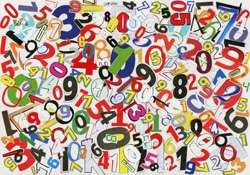Credit: Thinkstock
EU researchers contributed important knowledge to the field of modular representation theory in the form of proofs and pioneering analyzes.
Modular representation theory studies linear actions on finite groups, or groups of a countable (finite) number of elements.
A discussion of finite groups requires definition of several associated terms. The so-called representation of a given finite group can be reduced using a prime integer to get a modular representation of the group (sort of breaking down the whole into the sum of its parts).
Mathematically, an indecomposable or irreducible module of a finite group has only two submodules, the module itself and zero. Vertices and sources are mathematical entities associated with indecomposable modules.
While modular representation theory has evolved tremendously, many issues still remain to be addressed. In particular, modules of symmetric groups, a type of finite group whose elements allow only a certain number of structure-preserving transformations, are an active area of interest.
European researchers supported by funding of the ‘Vertices of simple modules for the symmetric and related finite groups’ (D07.SYMGPS.OX) project sought to develop fast algorithms for computation of vertices and sources of indecomposable modules as well as to study the Auslander-Reiten quiver considered to be part of a presentation of the category of all representations.
Investigators first analyzed two-modular Specht modules and the position of Specht modules in the Auslander-Reiten quiver with important definitive results.
In addition, the team produced ground-breaking proofs regarding the Lie module of the symmetric group, shedding light on a topic of mathematics until now clouded in mystery.
Furthermore, the Fiet conjecture was proved and innovative results were obtained regarding vertices of simple modules of symmetric groups.
Overall, the project team provided pioneering work and definitive results and proofs regarding symmetric groups and related finite groups that promise to significantly advance the mathematical field of modular representation theory.
Provided by CORDIS




















